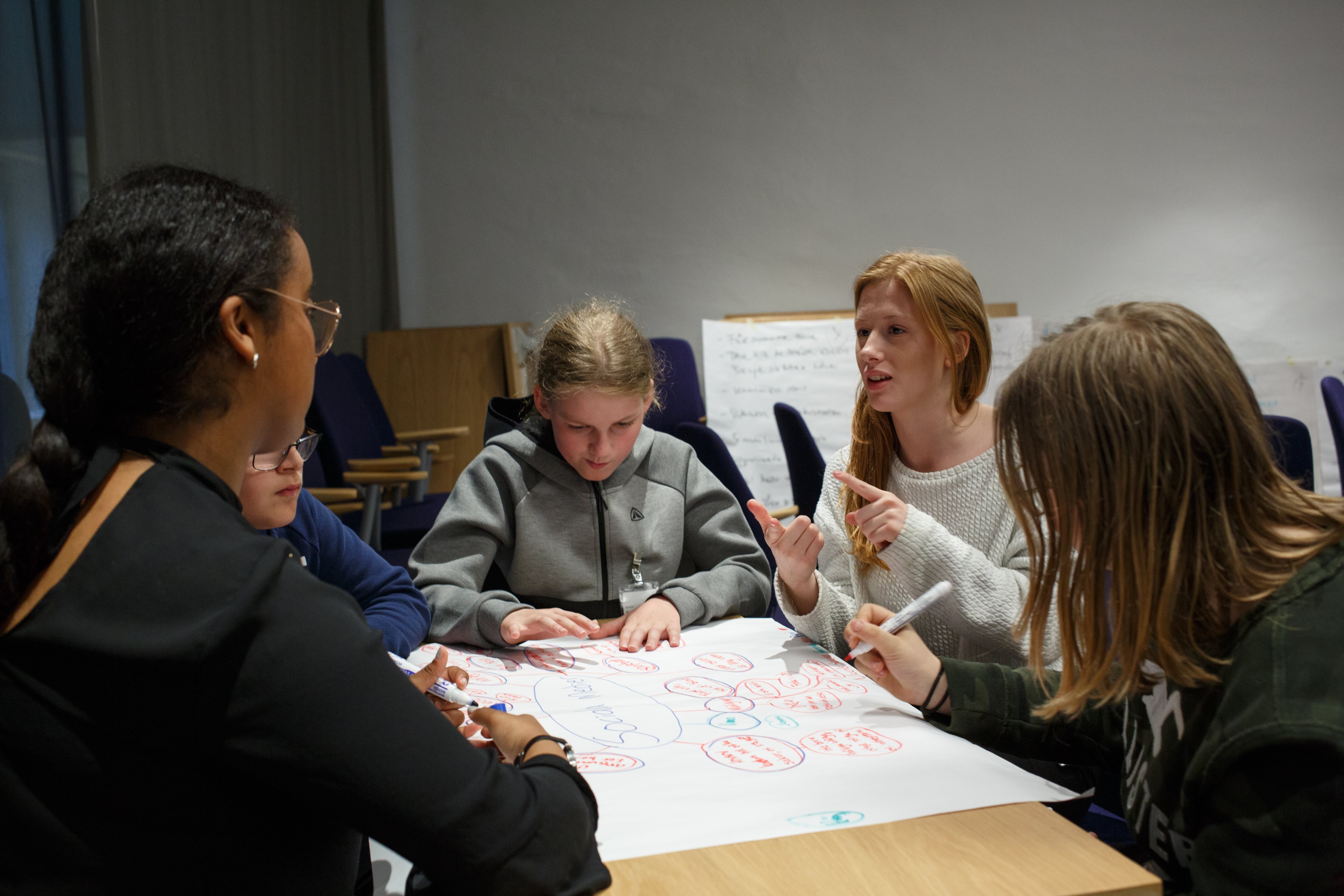In any classroom, there will inevitably be loud and quiet students. Not one student is the same and typically school life can be more of a challenge for the quieter ones that struggle to give answers aloud in class. The quiet ones tend not to participate in group discussions but always deliver their homework. It’s not that they don’t know the answer, they just lack the confidence to express themselves in front of others. One in five girls admitted that they would rather not put their hand up in class to avoid drawing attention to their appearance. The question is how can you help all of your students express themselves effectively in a way that they feel secure and comfortable.
Check out our top 6 tips:
1. Divide the class into small groups
By creating small discussion groups, it is a great way for quieter students to give their opinion in an environment that they feel more comfortable in. Speaking in front of a whole classroom or a larger group can be intimidating. The option to discuss ideas in a different type of setting could encourage quieter students to get their point of view across and their voice heard. Grouping shy students together may help them to express their opinion and encourages interaction with one another. Group activities are a great way to get students out of their comfort zones and promote participation.
2. Use technology to ask questions
The traditional and most common way that teachers ask their students questions is often a raised hand to answer exercise. However, often this is not the most engaging or encouraging way for quieter students to contribute in class. The louder or more confident students typically dominate these types of situations which then makes it increasingly hard for introverts to speak up.
A way to avoid this is to use Mentimeter which enables students to answer and ask questions anonymously. Real-time polling platforms are great to test students on what they have learnt during the lesson, play quizzes to make learning fun as well as many other question type options. Submitting anonymous answers takes away the fear of making mistakes and allows everyone to participate easily.
Top Tip: Mentimeter can also be used to gain feedback after lessons so that you can improve and get ideas of topics students would like to cover again.
3. Allow students to write down their ideas on paper
Alternatively, giving children a traditional pen and paper option to jot down answers to questions during discussions or workshops allows everyone to be included. While some students can easily share ideas verbally, some prefer written communication and can explain themselves better in that way.
4. Allow students to move around
Not one student is the same, so having a structured and non-flexible teaching style where you talk to the class, may not work for all your students. A way to combat this is to allow students to walk around the classroom, do activities that support collaboration and explore different methods of teaching. Some students may be quiet in lessons but in a less formal and structured atmosphere be able to thrive and feel much more comfortable to express themselves. Allowing quieter students to sit next to people that they are more relaxed around may help them get over the fear of talking publically in class.
5. Acknowledge students input in class
Recognising and giving praise to shy students when they speak up in class shows that you have noticed their efforts. This can give students a confidence boost and try to reduce their fear of giving their opinions.
Top Tip: Why not set aside some time on a Friday so that you and your students can give praise to each other for achievements during the week.
6. Build a good foundation and relationship between you and your students
Trust is the key to building a solid foundation and a good relationship between your students. For the more introvert students, it can very beneficial and effective if you have a good rapport with the teacher so that they feel more comfortable to give their ideas. Research has shown that listening to your students is critical in the development of the student/teacher relationship. It helps students to feel connected to the school, cared for and in turn motivated to learn.
Holding reflections sessions or allowing some extra time when you can talk and communicate with your students, one-on-one allows them to express any problems they may have inside or outside of school and will make them feel more acknowledged. Keeping regular contact with your students will make them feel much more comfortable and more likely to contribute to class discussions.
Top Tip: Explore Mentimeter’s template page for inspiration for how to use the platform for reflection sessions and more.



